Best Binoculars Under £100 uk
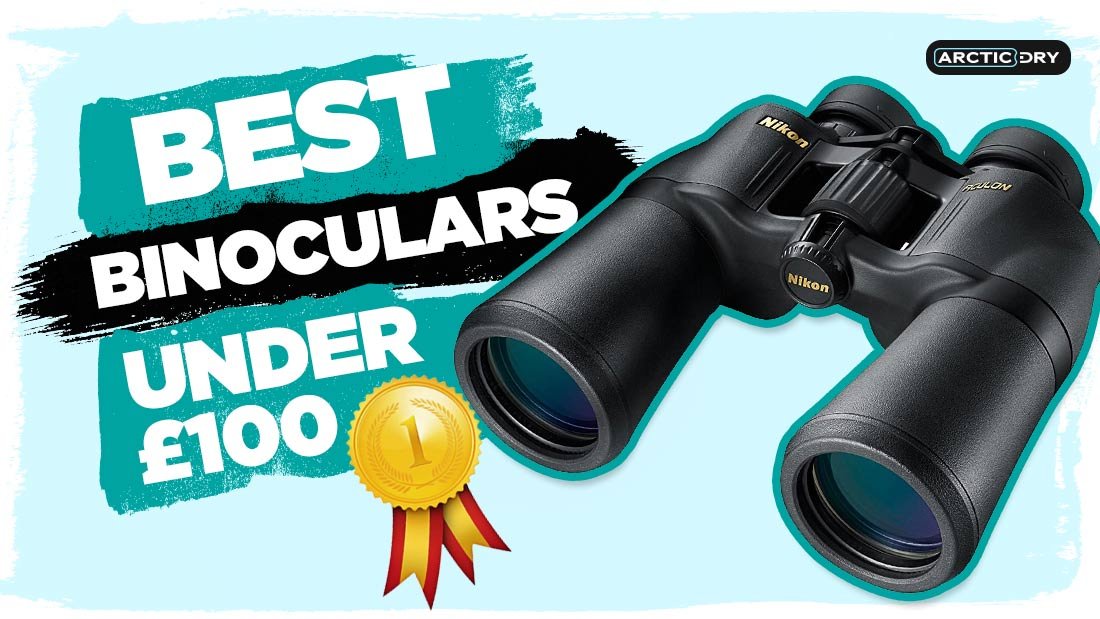
| Best Binoculars Under 100 Quid | Price | Rating | View |
|---|---|---|---|
| Barska Gladiator Zoom 10-30 x 50 | £67 | 5 / 5 | View |
| Viking RSPB Puffin 8×32 Binoculars | £61.86 | 4.5 / 5 | View |
| Nikon Aculon A211 10 x 50 Binocular - Black | £99 | 4.5 / 5 | View |
| Tom Lock 'Series 2' 10x42 Waterproof Binocular | £53.99 | 4.5 / 5 | View |
| Celestron 71009 SkyMaster 15 x 70 Binocular | £74.99 | 4.5 / 5 | View |
| Olympus 10x25 WP II Binoculars | £99.99 | 4 / 5 | View |
| Bushnell H2O 10 x 42 mm All Purpose Binocular | £96.61 | 4 / 5 | View |
| Nikon Aculon A30 10X25 Binoculars | £59.00 | 4.5 / 5 | View |
| Steiner Safari UltraSharp 8x22 binoculars | £84.00 | 4.5 / 5 | View |
If you’ve ever gone bird watching before, then you know that you can never leave your binoculars behind. See our guide here on the Best Binoculars for Bird Watching. Binoculars have numerous applications, especially for people who like to explore anything and everything on the horizon.
To get the most out of your binoculars, you want to look for the best amount of features you can get for the smallest amount possible.
In this article, we are considering the best binoculars under £100 UK you can get for your upcoming outdoor adventures!
Contents
Choosing the Right Binoculars for You
 Looking at a selection of binoculars from a distance, you might think they are no different from one another…they all look the same, don’t they? Okay, maybe some might be smaller than others but there is nothing really to tell them apart.
Looking at a selection of binoculars from a distance, you might think they are no different from one another…they all look the same, don’t they? Okay, maybe some might be smaller than others but there is nothing really to tell them apart.
If you’re just starting out, chances are you won’t need to go and spend £1000+ on a new pair of bino’s. That being said, there are plenty of models you can purchase under £100, and this article will show you just how many amazing pairs of binoculars there are for that price range!
Best All Round Binoculars UK
 If by any chance you happened to use or inspect a pair of binoculars before, you might have noticed that they all feature numbers e.g. 10X25 or 8X42, inscribed somewhere on them.
If by any chance you happened to use or inspect a pair of binoculars before, you might have noticed that they all feature numbers e.g. 10X25 or 8X42, inscribed somewhere on them.
Well, the first number represents the magnification power of the binoculars. A 10X unit will magnify the subject 10 times whereas a 12X unit will do this twelve times.
Meanwhile, the second number designates the size of the objective lenses in terms of millimetres.
The number you want to pay greater attention to is the magnification level.
Ordinarily, many people assumer “the bigger the better”, but this is not always true, especially for binoculars.
While a higher magnification will let you bring distant objects closer, it also has knock-on effects. It’s hard to hold the binoculars steady enough for the image to be stable and the field of view is also reduced. This implies you get to see fewer details through the binoculars.
What is the Best Magnification Level for Binoculars?
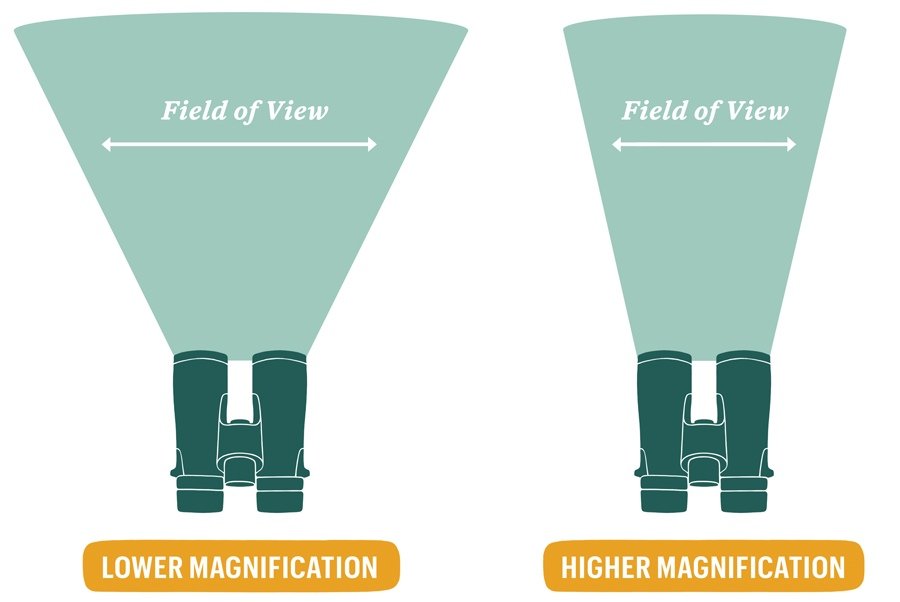
Image credit: Rei.com
The right magnification level will depend on what you plan to use the binoculars for.
For instance, if you’re buying the unit for bird-watching or other forms of nature-viewing, the sweet spot is 8X. This offers a reasonably wide field of view and the magnification allows you to hold the binoculars steady without having to deal with the distracting shake.
If you want to gaze at the stars on a clear evening, you might want to settle for a higher magnification level, at least 12X. Although it would be wise to attach them to a tripod for easier viewing.
Why Should I use Binoculars with Bigger Lenses?
The size of the objective lens is a critical factor that determines the quality of images you see through a pair of binoculars. A larger lens has better light-gathering abilities and the subject appears brighter and clearer.
However, go for too big a lens and the binoculars will be too heavy and bulky to be practical.
This is why many manufacturers go with a 42mm objective lens to strike the optimal balance between practicality and light gathering.
If you want a set of binoculars that you can easily carry around, then you can find a unit with a 32mm or 25mm lens. However, if you want to look at the moon and sturdy the constellation at night, go for a larger lens, as long as you have a tripod to mount the binoculars on.
Should I Worry about the Type of Prism or ED Glass?
Some other terms you might come across when shopping for binoculars include ED glass, Porro prism, and roof prism. All these are important because:
Porro and Roof Prisms
Binoculars use prisms to limit their sizes; otherwise, they would all be too huge to handle. These prisms come in different types and determine the size and shape of the unit.
Ordinary A-shaped binoculars employ Porro prisms and are usually larger than roof-prism binoculars, although slightly cheaper.
Modern H-shaped units use roof prisms and are more popular today because of their smaller and lighter frame.
ED or HD Glass
ED or extra-low dispersion glass is a unique type of glass designed to manage chromatic aberrations in binoculars. Chromatic aberrations become evident when viewing a dark object against a bright background.
This is manifested by colour fringing around the object, but this is prevented when using ED glass.
The image remains clearer and sharper, although ED glass is typically found in more expensive binocular units.
What Other Features Should I Look for in Binoculars?
Several other features help to enhance the quality of your binoculars. When shopping for a pair, remember to consider things such as waterproofing, which maintains their practicality even in wet conditions.
Fog proofing is another crucial aspect to look at, as well as eye relief and close focus.
Best Binoculars Under £100 UK – Reviews

| Best Binoculars Under 100 Quid | Price | Rating | View |
|---|---|---|---|
| Barska Gladiator Zoom 10-30 x 50 | £67 | 5 / 5 | View |
| Viking RSPB Puffin 8×32 Binoculars | £61.86 | 4.5 / 5 | View |
| Nikon Aculon A211 10 x 50 Binocular - Black | £99 | 4.5 / 5 | View |
| Tom Lock 'Series 2' 10x42 Waterproof Binocular | £53.99 | 4.5 / 5 | View |
| Celestron 71009 SkyMaster 15 x 70 Binocular | £74.99 | 4.5 / 5 | View |
| Olympus 10x25 WP II Binoculars | £99.99 | 4 / 5 | View |
| Bushnell H2O 10 x 42 mm All Purpose Binocular | £96.61 | 4 / 5 | View |
| Nikon Aculon A30 10X25 Binoculars | £59.00 | 4.5 / 5 | View |
| Steiner Safari UltraSharp 8x22 binoculars | £84.00 | 4.5 / 5 | View |
Barska Gladiator Zoom 10-30 x 50

The Barska Gladiator Zoom Binoculars are a mini-beast, coming in at just £65. They’re made with Ruby UV Lenses and have a 10-30x Magnification, which is solid for the pricerange.
They come with shock-absorbing rubber armour which makes them super comfortable in your hands and makes sure that when you’re out and about, you’re not likely to drop these badboys on the floor!
Viking RSPB Puffin 8×32
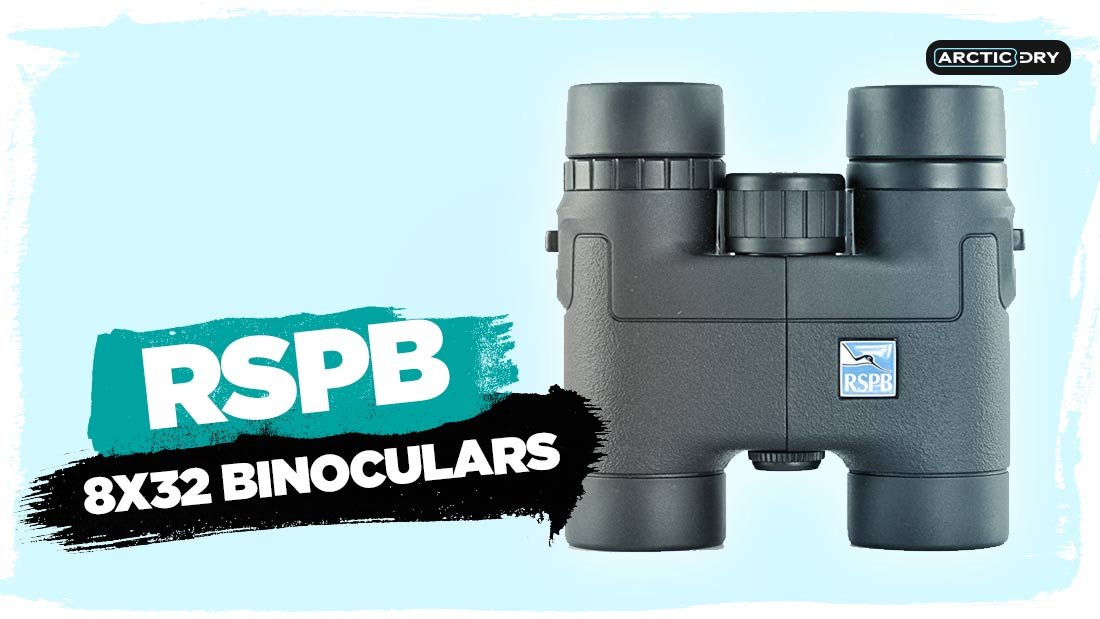 The general belief among binoculars enthusiasts is that the cheaper the unit, the harder it is to focus on a clear image. However, this couldn’t be further from the truth when it comes to RSPB Puffin 8X32. Despite the bargain tag on this pair of binoculars, the image viewed through is impressively clear and crisp.
The general belief among binoculars enthusiasts is that the cheaper the unit, the harder it is to focus on a clear image. However, this couldn’t be further from the truth when it comes to RSPB Puffin 8X32. Despite the bargain tag on this pair of binoculars, the image viewed through is impressively clear and crisp.
Thanks to a wide 7.5-degree field of view, the details you see are enough to save you the trouble of adjusting the binoculars.
You may not get to enjoy extra-close focusing with the 2.5m close focus, but you can dwell on the fact that the edges are quite soft on the field of view. You also get a strap and pouch, which enhances the portability and practicality of the binoculars.
The eye relief is also very low at 13.6mm! If you wear spectacles, you are advised to test the binoculars before you decide to buy them.
On the bright side, the RSPB Puffin 8X32 is pretty lightweight for convenient carrying yet feels solidly made.
The binoculars also come with screw-out eyecups, which is more than you’d expect at this price level.
Lastly, the 8X32 magnifications and objective lens pairing is a nice option if you’re going bird-watching or nature-viewing. Overall, you get a well-built set of binoculars that offers you value for your money.
Nikon Aculon A211
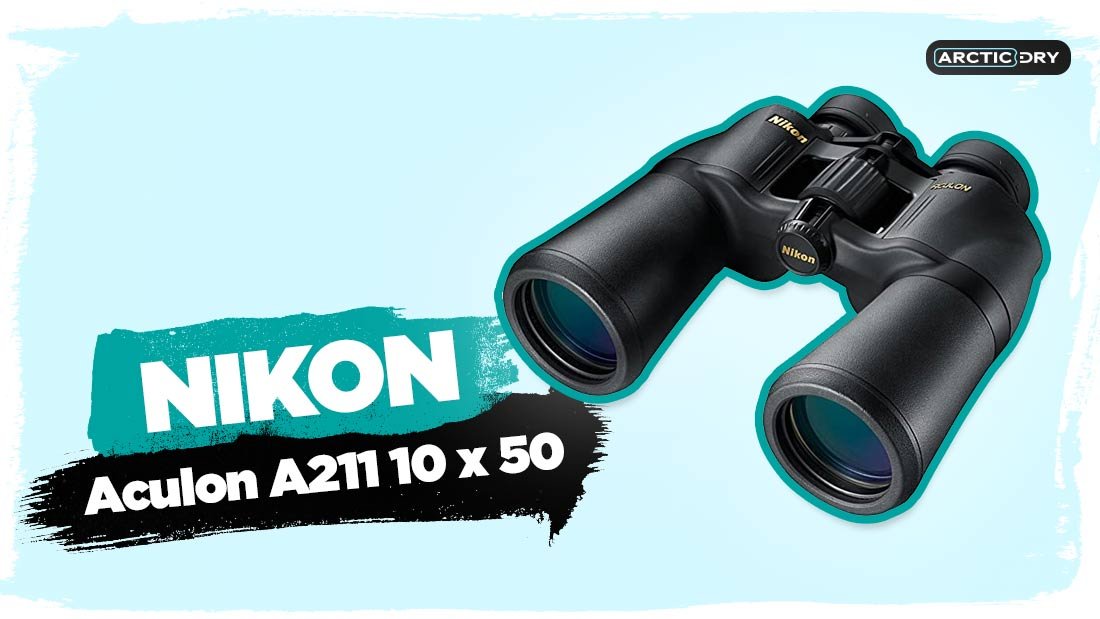 If you’re looking for a general-purpose full-sized pair of binoculars, the Nikon Aculon A211 series is one of the best binoculars under £100 you can buy.
If you’re looking for a general-purpose full-sized pair of binoculars, the Nikon Aculon A211 series is one of the best binoculars under £100 you can buy.
Thankfully, there are numerous reasons to back this claim. For one, the Aculons feature excellent optical quality compared to rivals at this range, which is thanks to their prism design.
You can tell that they use Porro prism design from their traditional angular build, and this results in brighter and clear images than rival binoculars that employ the more compact roof prisms.
Secondly, they incorporate an aspheric lens element with a surface uniquely designed by computer optimisation to limit the distortion of images.
The optics are partially multicoated, but this doesn’t take away from the advantages that these binoculars have over their competition. You can tell it from the robust track record, as well as the great reviews from past clients and professional users.
On the downside, the Aculons offer very tight eye relief. The 11-12m eye relief may not be suitable for people wearing glasses.
This is to say that you should try them out at the store before purchasing if your spectacles. Lastly, these binoculars are available in several versions, the choice of all up to you. You can opt between a 12X50, 10X50, 7X50, and 8X45 offerings. Generally, the 10X50 is the most popular in the market.
The 10X50 magnification and object lens size combination is the largest and most powerful size that can universally be considered portable by hand. The field of view is also wide at 6.5 degrees for enhanced details while a wide exit pupil allows for brighter image perception even in dark environments.
Tom Lock Series 2
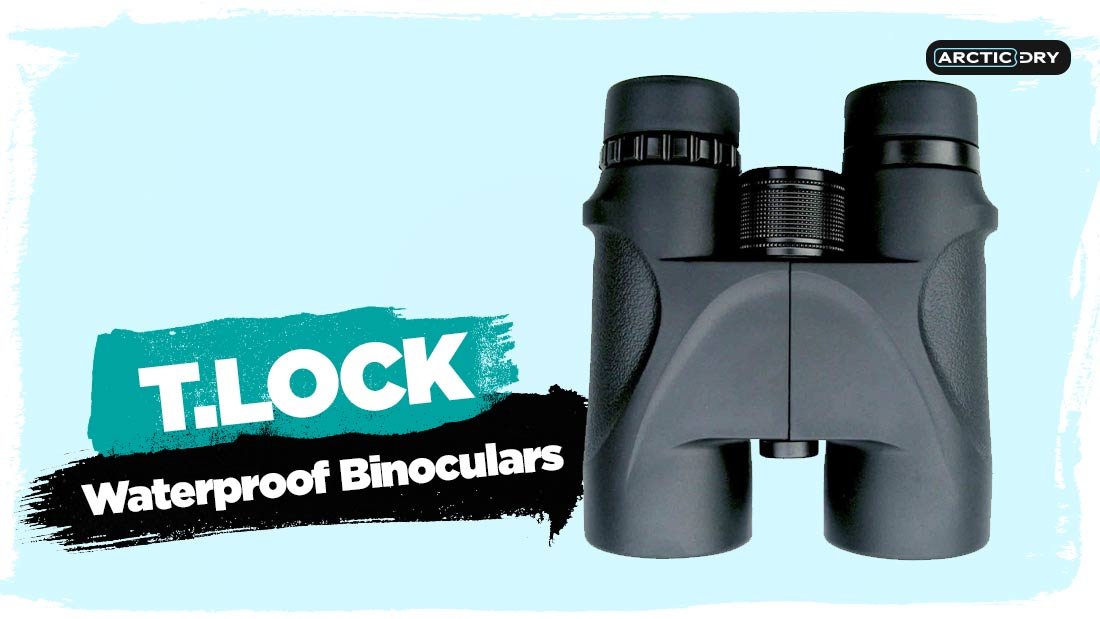 The Tom Lock brand is known for offering an impressive range of 42mm roof prism binocular units with more than decent features for the sub-100 price position.
The Tom Lock brand is known for offering an impressive range of 42mm roof prism binocular units with more than decent features for the sub-100 price position.
Usually, low-budget roof prism binoculars compromise on quality to achieve compactness. However, the series 2 unit comes with silver-coated prisms, phase correction coatings, as well as fully multicoated optics.
The phase correction feature is quite novel in this price range.
Thanks to these features, the Series produces crystal-clear and sharp images with little distortion for an entry-level priced pair of binoculars. You’ll also like that they are waterproof and fog proof, thanks to the nitrogen-filled lens. This ensures that you can continue using them with very little hassle when the weather gets cold and rainy.
Their overall rugged construction makes them a great pick for various rough outdoor expeditions.
Full rubber armouring protects against impact in case of a fall, making for durable usage.
Aside from the impressive specifications you see on paper, the Tom Lock Series 2 come with reliable quality control.
Although they are slightly bulkier than the Aculon A211s, these binoculars are a nice pick for those looking for a waterproof and fog proof unit without paying attention to the size. Not to mention that you can acquire it on a budget.
Celestron Skymaster
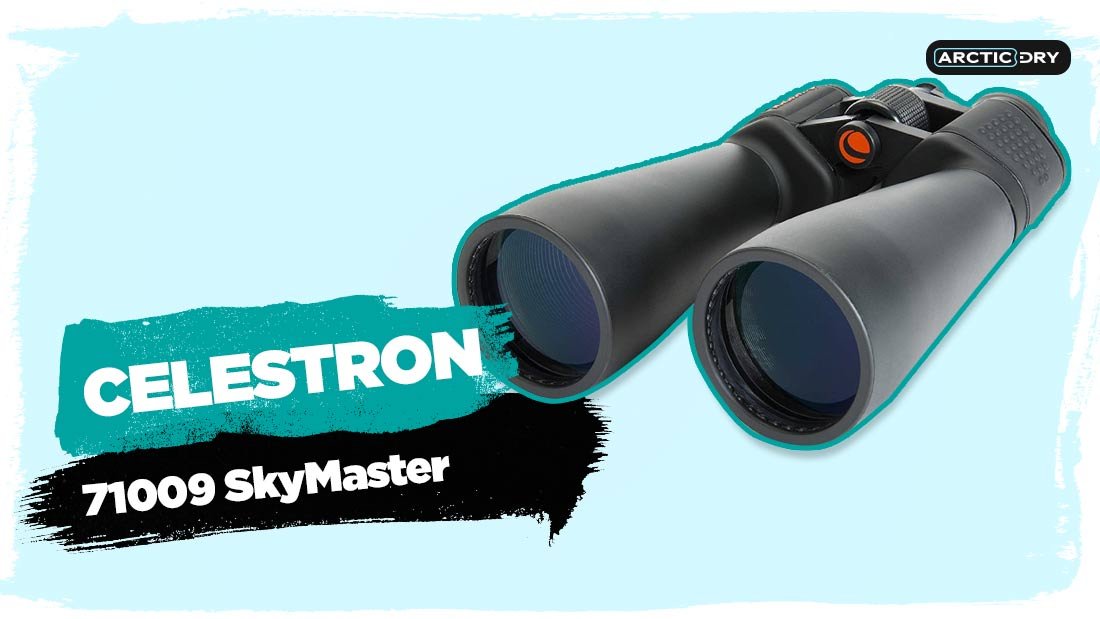 If your purpose for buying a pair of binoculars is long-range observation such as astronomy, then you can’t overlook the size of the aperture. This is why the Skymaster line of affordable binoculars from Celestron is the right option for those who want to take a serious gaze at the stars, albeit on a budget.
If your purpose for buying a pair of binoculars is long-range observation such as astronomy, then you can’t overlook the size of the aperture. This is why the Skymaster line of affordable binoculars from Celestron is the right option for those who want to take a serious gaze at the stars, albeit on a budget.
Typically, large and cheap units don’t always score high when it comes to quality, and the Achilles heel on the Skymasters comes in the form of optics.
They are designed with undersized prisms, which cut down the effective aperture below the marketed number. The implication is that the images aren’t particularly sharp.
The quality control is another issue with binoculars from Celestron. Many units have been shipped with miscollimated prisms. Thankfully, the extra aperture, as well as the power offered make up for the underwhelming features.
You can choose between the 12X60 and 15X70 versions when buying the Celestron Skymaster.
The 12X60 version is a manageable option if you want an oversized pair of binoculars to hold by hand. Resting the unit on your elbows or observing from a sitting position on a table may prove helpful if you want a steadier view.
| Material | Rubber |
| Water Resistance Level | Water Resistant |
| Eye Relief | 20 Millimetres |
| Prism | Porro Prism |
| Relative Brightness | 22 |
| Item Weight | 3.28 Pounds |
| Exit Pupil | 4.7 Millimetres |
| Objective Lens Diameter | 70 |
Overall, they make a good choice for astronomy if you don’t have a tripod. However, they are not a good fit for general-purpose binoculars.
OLYMPUS 10X25 WP II
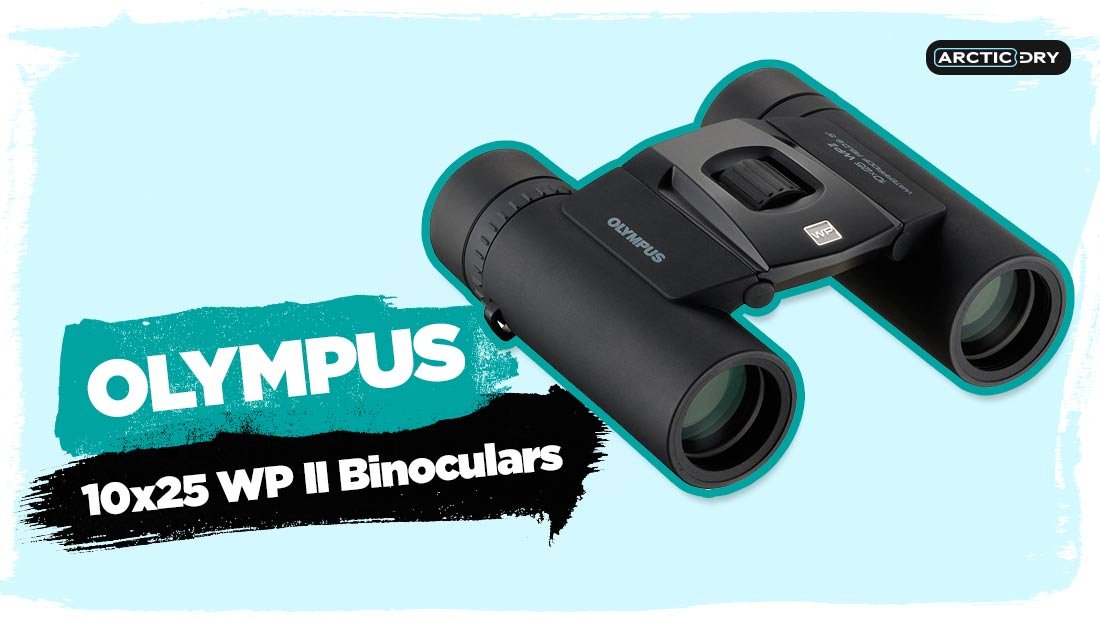 These compact and foldable binoculars were designed for explorers who aren’t afraid to get to the depth of the wilderness. They come with a 10X magnification level, paired with a 25mm objective lens to make for a nice combo for nature-viewing. Thanks to their waterproof design, you’ll be able to use them in any kind of weather, as well as at sea.
These compact and foldable binoculars were designed for explorers who aren’t afraid to get to the depth of the wilderness. They come with a 10X magnification level, paired with a 25mm objective lens to make for a nice combo for nature-viewing. Thanks to their waterproof design, you’ll be able to use them in any kind of weather, as well as at sea.
A built-in dioptric is conveniently incorporated into the binoculars and made adjustable to make the unit practical for those who wear spectacles.
You also get rubber coating to enhance your grip when holding the binoculars, even with sweaty palms. The Olympus WP II use multi-coated lenses, which help to sharp, crisp, and clear images.
The 1.5m close focus is good for locating distant subjects while a central focus knob allows for easy adjustment and saves you the trouble of moving back and forth when doing it.
Weighing just 270g, these binoculars are relatively lightweight, making them suitable for those who move around a lot.
Their 114X115X45mm dimensions allow you to fit them inside a backpack effortlessly. Overall, these are practical binoculars that will serve you diligently on a bird-watching expedition. Not to mention that you get a 25-year warranty when you buy the unit, guaranteeing you of the quality you’re getting!
BUSHNELL FORGE 15X56
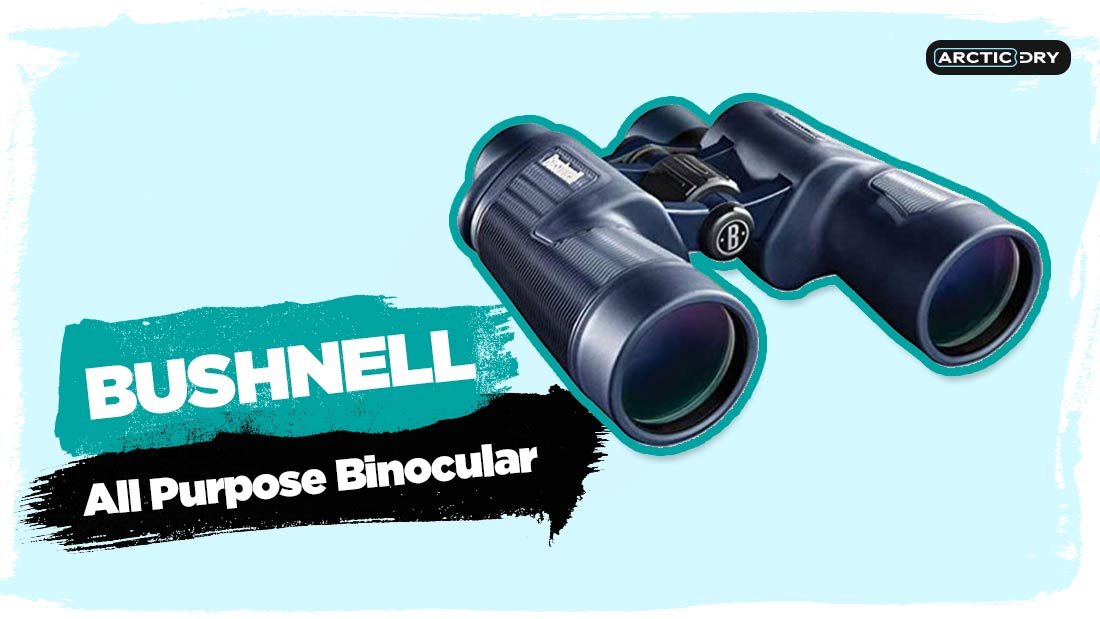 If you are low on your financial luck but still want something reliable you can take on a bird-watching adventure, can count on the Bushnell Forge not to let you down. These binoculars will come on handy on a range of viewing pursuits, including bird watching, hiking, sight-seeing, as well as star gazing.
If you are low on your financial luck but still want something reliable you can take on a bird-watching adventure, can count on the Bushnell Forge not to let you down. These binoculars will come on handy on a range of viewing pursuits, including bird watching, hiking, sight-seeing, as well as star gazing.
Another important aspect is that the binoculars boast an IPX7 waterproof rating, which keeps them practical when the heavens open.
This also means that you can use them conveniently while at sea. You also get generous lens coating, as well as ED prime glass construction for enhanced performance.
These ensure that you get to see sharp and clear images in all circumstances. On the downside, the binoculars are not the lightest you can find; at 1kg, you don’t want to spend the whole day carrying them. But the included neck strap helps with portability. The 15X magnification is pretty high, which explains the weight of the unit.
Meanwhile, the 56mm objective lens makes it easier to view distant objects while allowing in ample light to maximise the number of details that can be perceived.
Another notable mention is Bushnell’s EXO barrier protection; a lens coating which bonds with the glass to repel oil, water, dust, as well as debris to prevent scratching.
Overall, this is a ruggedly designed pair of binoculars that will offer general-purpose functionality. Also, the Olympus WP II is pretty portable and can be used in any kind of weather. This is why it is one of the best binoculars under £100 you can buy!
Nikon Aculon A30
 If you are into bird watching, you want to try out the Aculon A30 from Nikon. It offers an optimal balance between power and portability by combining a high magnification power with a small lens diameter. Even though you can get a new unit on a friendly budget, the images are surprisingly clear and probably among the best at this price position.
If you are into bird watching, you want to try out the Aculon A30 from Nikon. It offers an optimal balance between power and portability by combining a high magnification power with a small lens diameter. Even though you can get a new unit on a friendly budget, the images are surprisingly clear and probably among the best at this price position.
This is thanks to the incorporated multi-coated lens to offer unrivalled image clarity and allow in enough light to ensure the images are bright.
The A30 also features a 25mm lens which helps to tame the weight of the unit to allow for easy portability.
This is enhanced by the compact frame of the binoculars; small enough to fit inside the pockets of your pants.
The 10X magnification brings distant images closer while its decent field of view delivers enough details in your subjects. There is also a single focusing ring, which is firm and stable when focusing on objects. Overall, it provides you with precise control without troubling you with rigidity when rotating it.
While these binoculars are lightweight, they impress with their tough construction.
They are also ergonomic to hold with their sleek frame, ensuring that you’ll have no qualms holding them throughout the adventure.
On the downside, the Aculon A30 don’t have a cap on the objective lens. This means the lenses are prone to fogging when used in cold to warm environments. Other than that, these will make a nice option for people who are on the lookout for new bird species.
Steiner Safari UltraSharp 10×26 binoculars
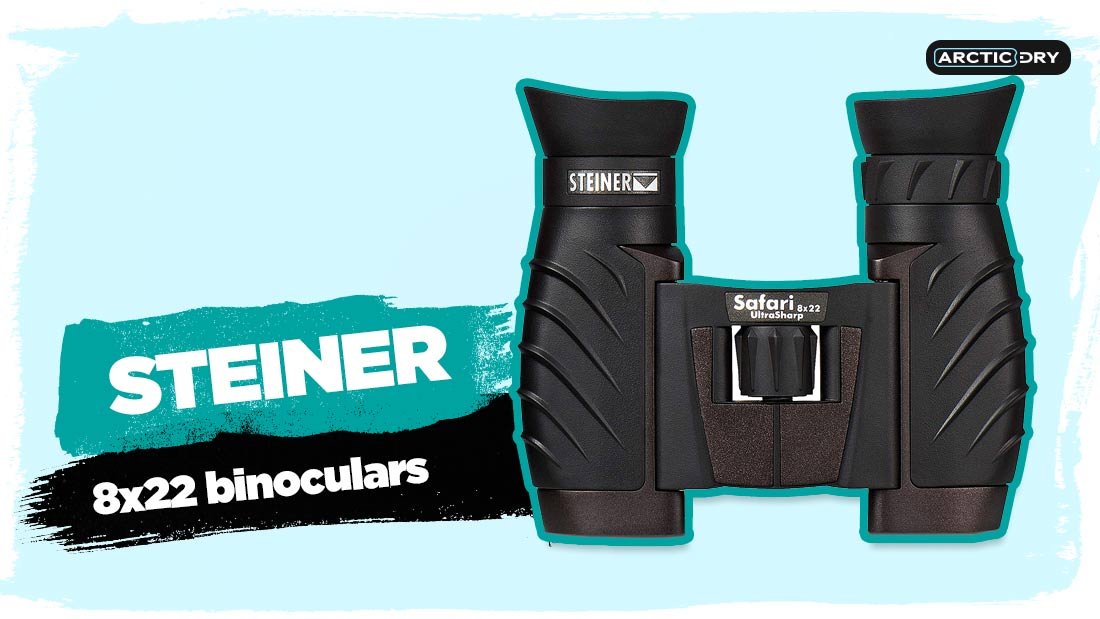 The 10X magnification power will strike you when you skim through the specifications of these binoculars, but there is more that the Ultra-sharp has to offer. For instance, the binoculars are designed to be lightweight, making it practical for explorers and adventurers to hold them all day long without feeling weighed down.
The 10X magnification power will strike you when you skim through the specifications of these binoculars, but there is more that the Ultra-sharp has to offer. For instance, the binoculars are designed to be lightweight, making it practical for explorers and adventurers to hold them all day long without feeling weighed down.
They only weigh 297g, and this can be credited to the 26mm lens diameter. The 10X magnification also allows you to view distant subjects more easily.
Another practical thing about this unit is that you won’t have trouble handling it. The Safari Ultrasharp from Steiner is designed with ergonomic grips to enhance your grasp.
Meanwhile, the controls have intelligently been laid out for easy operation, even for the rookie users. The optics are clear and precise, although not the best on our list.
They are, nevertheless high-contrast and the 11mm eye relief will come in handy for users who wear spectacles.
In summary, the Steiner Safari UltraSharp 10×26 binoculars are arguably the best binoculars under 100 UK you can find when it comes to value for money. It will especially be a great pick for inexperienced sight-seers who don’t want to spend a fortune on their first unit.
Conclusion
Typically, not many people will favour their chances of landing a quality product when buying on a budget. But this couldn’t be further from the truth, especially when you conduct the appropriate due diligence. For outdoor adventurers like bird watchers and sightseers, it is possible to find a nice pair of binoculars to take on your expeditions.
The guide above mentions some of the best binoculars under £100 the market has to offer. Remember to put them at the top of your priorities the next time you go shopping for a budget-friendly set of binoculars.
FAQ
How can I keep my binoculars clean?
If you spend most of your time on the trail, chances are you’re going to be taking your binoculars almost everywhere with you. At some point, the device is going to get dirty and require some cleaning. However, you need to be careful how you handle this as there is a fragile and sensitive coating on the lens that can be damaged if you’re too rough.
The general rule of thumb when it comes to cleaning binoculars is to do it as seldom as possible. You can get a soft cleaning brush to go gently over the lens as you try to get rid of any specks of dust.
However, if there is heavier dirt on the lens that requires a more thorough cleaning, then you should find oft clothing such as a microfibre cloth to wipe off the smudge.
Start by removing any large specks on the lens before gently proceeding to the finer ones using soft and circular cleaning motions. But if this does not eliminate the dirt, you can purchase a special cleaning fluid to get the job done more effectively. Note that thorough cleaning should only be performed once in a blue moon and always remember to put the caps back on when you’re done using the binoculars.
What Does Phase Coating Mean?
Some high-performance field glasses are usually billed as being “phase-coated”. What this means is that there is a unique coating on the roof pentaprism, popularly referred to as the p-coating. In this case, when a beam of light shines on the roof pentaprism, it is reflected several times such as in a “roof” angle.
The ray is split into two during reflection, in a process that creates a change in the light wave phases.
Instead of them being equal, they are staggered, resulting in reduced resolution and contrast. However, the application of multiple layers keeps this from happening.
Should I Buy Branded or Non-branded Binoculars?
The market is awash with quality Chinese manufactured binoculars that you can acquire at a relatively friendly price. However, most of these are not good, especially in the long haul. If your budget allows, you’d better placed going for branded binoculars that will not only meet your expected performance but do this consistently over time.
The cost will be slightly more but the overall quality will make it all worth it!
Should I Get Binoculars or a telescope?
If you asked me, a pair of binoculars would be the better option since binoculars offer 3D imaging as opposed to the flat images that telescopes can produce. Also, looking at objects through binoculars makes for a more practical and comfortable way of doing things since you are using both eyes.
Struggling to shut one eye as the other one looks through a telescope proves to be a daunting task for some individuals.
Lastly, while telescopes will offer you superior magnification power, you can still get high-power binoculars with up to 100X magnification. Just be ready to break the bank!
Should I Wear Glasses When Using My Binoculars?
Not all the time! This is because binoculars are designed with a focus mechanism that you can use for sharper and clearer viewing. This will typically correct your vision most of the time. But if you have astigmatism, you need to wear your spectacles when using the binoculars.
Nearly all brands feature twisted eye-cup to enable you to use the instrument more comfortably even with your glasses on.
Ideally, you want to find a unit that has at least 15mm eye relief for effective performance. This will be enough for anyone that wears glasses and lastly, before you pay for the binoculars, confirm from your vendor that the binoculars are suitable for people who wear spectacles.
How Do I Get Rid of Double Vision When Using My Binoculars?
Double vision is a common phenomenon experienced by binoculars users, and several factors could be behind it. To fix this, you want to start by adjusting the binocular barrels to get one image before adjusting the focus mechanism so that the image is crystal clear. In short, there should only be one clear image when viewing through the binoculars.
In some cases, the lens may need to be adjusted, which will require you to examine each barrel separately.
Try to find out which one requires the adjustment then do it manually with the aid of relevant instruments. But if you don’t have the experience, take your binoculars to a professional, you don’t want to risk aggravating the problem!








